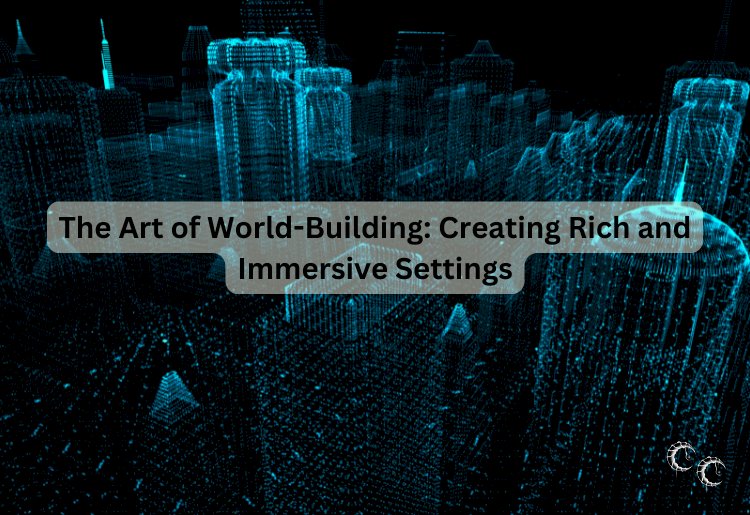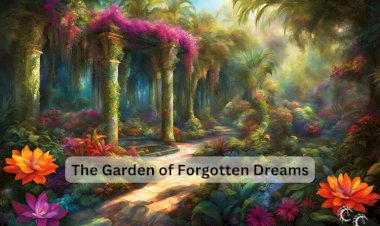The Art of World-Building: Creating Rich and Immersive Settings

World-building is the backbone of any great story, whether in novels, films, or games. It’s the process of creating a setting that feels alive, detailed, and believable—a world where readers or players can lose themselves. When done well, world-building transforms a simple narrative into an immersive experience, inviting the audience to explore and engage with every corner of your imagined universe.
Defining the Foundations
At its core, world-building begins with establishing the basic parameters of your world. Consider the following aspects:
- Geography and Environment: Define the landscapes, climates, and natural features that shape the world. Are there vast deserts, lush forests, towering mountains, or sprawling oceans? Each setting provides a unique backdrop that influences the culture and challenges within your story.
- History and Lore: Every world has a past. Develop a timeline that includes major events, conflicts, and achievements. This historical context adds depth and creates a sense of continuity, making the world feel real and lived-in.
- Cultures and Societies: Think about the diverse groups that inhabit your world. What are their beliefs, traditions, and social structures? How do these cultures interact, cooperate, or clash with one another? Rich cultural diversity makes the world more engaging and authentic.
Crafting the Details
Once you’ve established the foundations, focus on the details that bring your world to life:
- Language and Naming Conventions: Unique languages or naming systems can provide a sense of authenticity. Consider creating distinct dialects or names that reflect the history and culture of your inhabitants.
- Mythology and Religion: Belief systems shape societies. Integrate myths, legends, and deities that influence the world’s cultures, politics, and conflicts.
- Economy and Technology: What drives the economy? What level of technology exists in your world? These factors affect how characters live, work, and interact with their surroundings.
- Political Structures: Consider the governance of your world. Are there kingdoms, empires, or democratic societies? Power dynamics can create conflict and drive the narrative forward.
Techniques for Immersive World-Building
Bringing your world to life involves both creative imagination and careful planning. Here are some techniques to help you craft an immersive setting:
- Show, Don’t Tell: Instead of lengthy expository passages, reveal the world’s details through characters’ interactions, dialogues, and experiences. Let the audience uncover the lore organically as they engage with the narrative.
- Use Sensory Details: Engage all the senses when describing your world. Describe not only what a place looks like, but also what it sounds, smells, and feels like. Sensory details make the environment vivid and tangible.
- Integrate World-Building into the Plot: Weave the details of your world into the story. Let the setting influence characters’ decisions, create conflicts, and serve as a catalyst for the narrative. This integration makes the world feel essential rather than an afterthought.
- Consistent Rules and Logic: Establish clear rules for how your world operates, whether it’s magical laws or technological limitations. Consistency builds credibility and helps readers understand and immerse themselves in your universe.
- Use Visual Aids: Maps, sketches, and timelines can help both you and your audience visualize the world. Even if you’re not an artist, simple diagrams can provide clarity and inspire deeper exploration of your setting.
The Impact of Rich World-Building
Effective world-building enhances the narrative by providing context and depth. A well-crafted world:
- Engages the Audience: When readers or players feel like they are part of a living, breathing world, they become more emotionally invested in the story.
- Drives Character Development: The environment and history of your world shape your characters’ identities and motivations, making their journeys more compelling.
- Encourages Exploration and Discovery: A detailed world invites your audience to explore beyond the main storyline, uncovering hidden lore, secrets, and side stories that enrich the overall experience.
Conclusion
The art of world-building is about more than just creating a backdrop for your story—it’s about constructing a universe that resonates with authenticity and invites deep engagement. By defining solid foundations, paying attention to intricate details, and weaving these elements seamlessly into your narrative, you can create rich and immersive settings that captivate your audience. Whether you’re writing a novel, developing a video game, or scripting a film, effective world-building transforms a simple story into an unforgettable adventure. Embrace the process, and let your imagination shape a world that readers will want to explore time and time again.





























